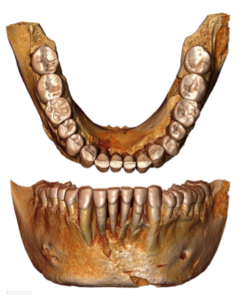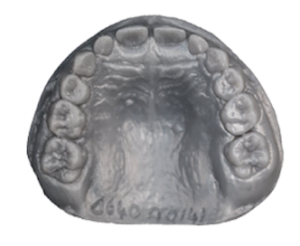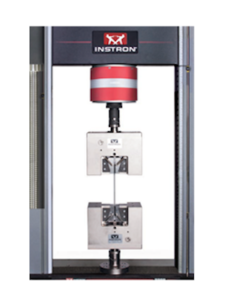Opportunities
PhD Scholarship – Fully funded PhD scholarship (3.5 years) in Biological Anthropology
Location: Monash Clayton Campus
Employment Type: Full-time
Duration: 3.5-year fixed-term appointment
Remuneration: The successful applicant will receive a tax-free stipend, at the current value of $36,063 per annum 2025 full-time rate, as per the Monash Research Training Program (RTP) Stipend www.monash.edu/study/fees-scholarships/scholarships/find-a-scholarship/research-training-program-scholarship#scholarship-details.
- Amplify your impact at a world top 50 University
- Join our inclusive, collaborative community
- Be surrounded by extraordinary ideas – and the people who discover them
The Opportunity
The Palaeodiet Research Lab is seeking to expand its existing excellence in the area of Biological Anthropology through a new appointment of a PhD student with a strong interest in dental anthropology. This position is linked to the Australian Research Council Discovery Project titled “Unravelling the secrets of tooth enamel: implications for human evolution” (DP250100091), where we are planning to generate novel insights about the form and function of dental enamel and its significance in primate evolution. The PhD project will focus to study the effect of wear on tooth function in primates, and to understand the role of enamel thickness in living and extinct hominoid species. The PhD student will use high-resolution 3D digital models of teeth, 3D scanner, micro-CT data and engineering software.
The PhD student will join the Department of Anatomy and Developmental Biology, one of the strongest research and teaching departments in the field and will be work under the supervision of Associate Professor Luca Fiorenza and Associate Professor Jing Fu from the Mechanical and Aerospace Engineering Department.
The candidate should hold a master’s degree in biological anthropology, comparative biology or a related field. Ideally, the candidate will have experience in human and non-human skeletal biology and a good knowledge of statistical analysis. The ability to work both independently and collaboratively with a team would be advantageous. The PhD scholarship is open to domestic and international students.
PhD entry requirements and scholarship eligibility:
Candidates will need to fulfil the Monash University minimum requirements for admission to a PhD detailed here:
www.monash.edu/admissions/entry-requirements/minimum
Applicants should have:
- a bachelor’s degree of at least four years in a relevant discipline, which includes a research thesis or project, with a minimum overall average grade of an honours degree equivalent to the Second Class Honours Division A;
- or a master’s degree in a relevant discipline which includes a research thesis or project equivalent to at least 25 percent of one year of full-time study, with a minimum overall average grade of honours equivalent to the Second Class Honours Division A;
- English language: For entry to Monash University, you must meet the minimum English language requirements. You need to achieve the minimum scores shown for any of the recognised English language tests. For example, for the IELTS (Academic) test, the overall score must be at least 6.5 (with not less than 6.0 in reading, listening, speaking and 6.0 in writing).
How to apply: To express your interest in this scholarship and PhD research opportunity, we request candidates provide:
- A cover letter describing your research interests and why you would like to undertake a PhD (maximum one page)
- A CV including qualifications, academic achievements, list of publications, work history and references
- A copy of your academic transcript(s)
- English Language Certificate (if needed)
Enquiries
For specific questions about the position please contact Associate Professor Luca Fiorenza (luca.fiorenza@monash.edu)
Closing date
You should send your application via email to Associate Professor Luca (luca.fiorenza@monash.edu) Sunday 2 March 2025, 11:55 pm AEDT.
PhD Scholarship at Monash University
Postgraduate research scholarships are offered to both domestic and international applicants to undertake a higher degree by research at one of Monash University’s Australian campuses.
Full details are available at Monash Graduate Research Service.
2024 Honours Projects
The Department of Anatomy and Developmental Biology runs a Bachelor of Science, Bachelor of Biomedical Science and Bachelor of Medical Sciences Honours year program. Students who have completed their Honours projects in this Department have had very successful career outcomes. Most have gained employment, continued on to complete their PhD or enrolled into postgraduate Medicine or allied Medical courses.
For 2024 the Palaeodiet research Lab offers two Honours project:
FORM, FUNCTION AND WEAR OF NEANDERTHAL TEETH

Background: Size and shape variation of molar crowns in humans play an important role for testing phylogenetic hypotheses and for better understanding how species adapted to their environment. Recent studies have shown that Neanderthal dental morphology is characterised by distinctive traits with a marked expression and high frequency, differing from those of Anatomically Modern Humans (AMH). This Honours project will examine molar functional morphology of important fossil specimens of Neanderthals and AMH using a multidisciplinary approach that integrates dental topographic methods with tooth wear and enamel thickness analyses derived from high-resolution 3D digital models of teeth.
Project aim/s: This Honours project is part of a large international study, funded by the Australian Research Council, that aims to understand if Neanderthal cranio-dental morphology, characterised by an overall robusticity with a forwardly projecting face and extensive anterior dental wear, was truly adapted to resist powerful bite forces.
Specifically, the Honours project has three key aims:
- To reconstruct the relationship between occlusal wear and tooth architecture during masticatory function;
- To compare the masticatory efficiency in Neanderthals and AMH;
- To understand how diet and cultural habits in Pleistocene humans influenced tooth morphology and enamel thickness variation.
Techniques to be utilised: The Honours project will be based on a multidisciplinary approach that include advanced 3D computer methods, dental anthropology, biomechanics, functional morphology, palaeontology and statistics. This approach may also have wide future applications in orthodontics, where the relationship between facial morphology, occlusion and tooth morphology is still not well understood.
MASTICATORY EFFICIENCY OF MODERN HUMAN TEETH: A BIOMECHANICAL STUDY


Background:
Dental enamel is the hardest and most mineralised tissue found in vertebrates. It plays two fundamental roles:
first, it enhances resistance to fracture from biting hard objects. Second, it prolongs tooth lifetime from wear.
However, tooth wear is an inevitable process, a process caused by chemical and/or mechanical factors associated
with the mastication of food, which changes tooth shape, affects function and that compromises structural integrity. Should we consider tooth wear as an adverse, destructive process, or should we consider it as an inevitable adaptation to make our teeth more efficient? Should we prevent or reduce the destruction of tooth substance, or should we actually facilitate it to prolong the life of our dentition?
Project aim/s:
In this project we will investigate if modern human teeth remain functionally efficient for fracturing foods despite wear. We will obtain experimental data of chewing efficiency through mechanical testing that will employ 3D printed teeth and food items. For this study we will use 3D digital models of the dentition of Australian Aboriginal children of the Yuendumu Reserve (Northern Territory), who were annually observed between 1951 and 1971.
Techniques to be utilised: This is an interdisciplinary project between the Departments of Anatomy and Developmental Biology and Department of Mechanical and Aerospace Engineering. The project will be based on dental anatomy, CAD modelling, 3D printing and biomechanics. The methods may have potential applications in biomedicine and orthodontics.
PhD Scholarship – Fully funded PhD scholarship (3.5 years) in Biological Anthropology
